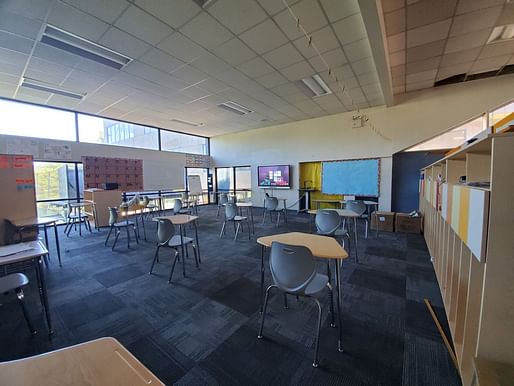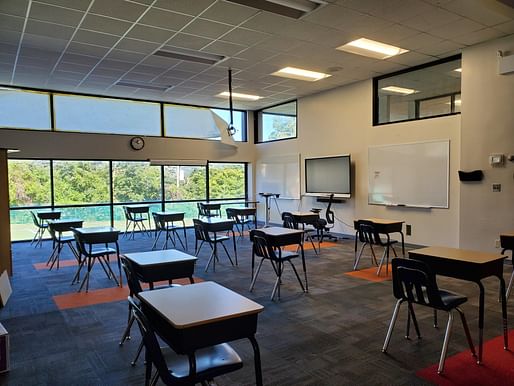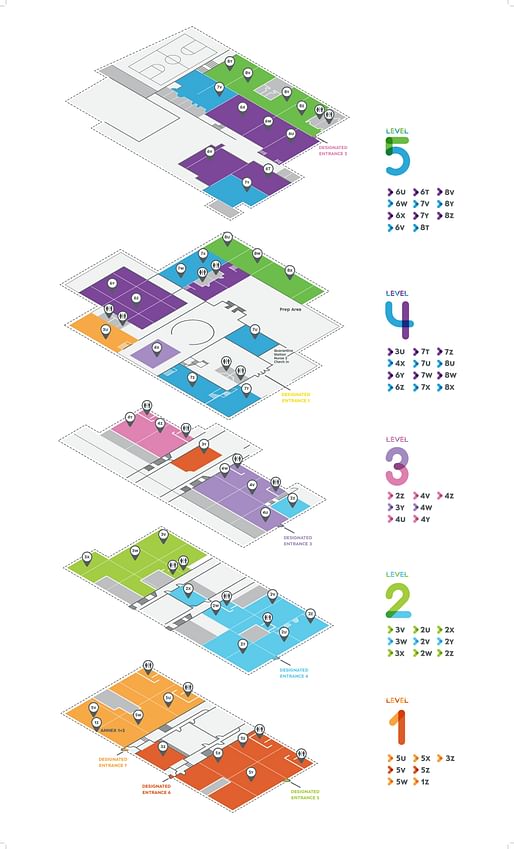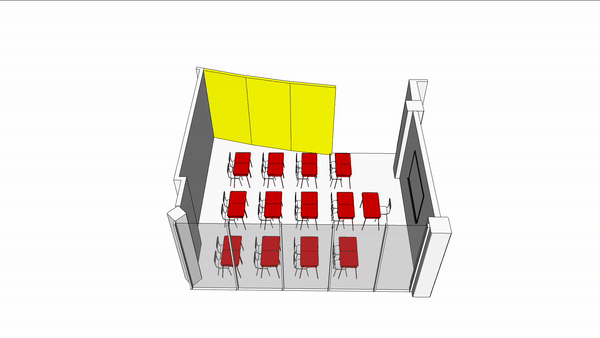
SAR Academy and High School, a private Modern Orthodox Jewish facility in the Bronx, was the first NYC school to close due to COVID-19. The school administration quickly acknowledged the need to reevaluate its building facilities and operations, along with class schedules and sizes amongst other factors to develop a flexible plan to reopen the school safely this fall.

Architects Esther Sperber and Hila Stern were called upon to lead the Academy in its efforts towards reinvention. "We had to revise both facilities and usage plans, but we also had to include some student/teacher behavior change in our design methodology," said Hila Stern, owner of HSB Architecture & Design in a statement. "Our approach included some newly acquired habits and behaviors."

Owner of Studio ST Architects Esther Sperber added, "Rethinking design and furniture placement, alongside greater integration of technology, created a highly flexible environment. And with a multi-layered, age-appropriate process the physical space can be quickly and easily adapted."

SAR Academy established 6 priorities to guide the design and planning process for the return to the school buildings; they include:
Each of these priority areas can be explored in more detail in the design team's Reopening Case Study presentation. As a result of the work, the facilities at SAR took on a number of changes. Classrooms were reconfigured. The outdoors and underutilized spaces, such as the chapel, study hall, library, conference rooms, were repurposed to create supplemental learning environments. And stairwells and hallways were designated for single direction traffic.

Moreover, nurse and quarantine stations were placed at the main entrance for symptomatic students. Signage and wayfinding were reimagined to map a safe and socially-distanced pathway through the building.
To ensure healthy air quality throughout, HVAC systems were modified and technology upgraded. And the positive aspects of the last few months of remote learning were evaluated and incorporated into a new hybrid curriculum that includes a mix of online and in-school learning to allow SAR greater flexibility.

"These unprecedented circumstances have given us a unique opportunity to rethink existing models, even successful ones, and explore new ideas," said Rabbi Binyamin Krauss, the Principal at SAR Academy. "In planning our reopening, we have tried to think creatively and seize opportunities that we may not have considered previously."

Elaborating further on the project, Sperber explained that while the changes to the school's building's were in response to the pandemic, the development should also have long-term benefits for the students, faculty, and overall users of the space. Those benefits could come from the HVAC improvements and the touchless bathroom fixtures to promote health in the usual flu seasons and can stretch all the way to the greater flexibility of the classroom spaces.

SAR High School Class reconfiguration.
"A number of teachers in the high school have expressed excitement about the enlargement of the classroom which they see as an opportunity to create more flexible and collaborative ways of learning such as group projects and small harkens seminars within their classes," Sperber told Archinect. The architect also expressed enthusiasm for the renewed focus on the potential of using the school's outdoor space, allowing students to get outside and to further mitigate the risks of contracting COVID-19.
In the end, SAR Academy's collaboration with Sperber and Stern resulted in a reimagined school for its students and faculty and many step towards a healthier and more dynamic future. Please be sure to check out the design teams more in-depth Reopening Case Studio Google Slide presentation.
No Comments
Block this user
Are you sure you want to block this user and hide all related comments throughout the site?
Archinect
This is your first comment on Archinect. Your comment will be visible once approved.